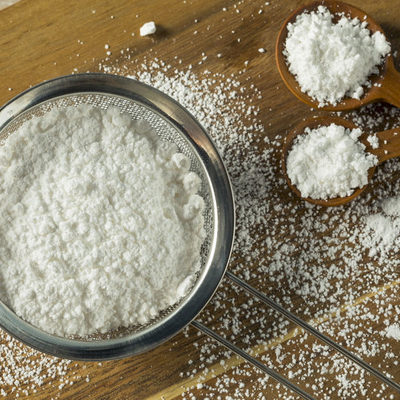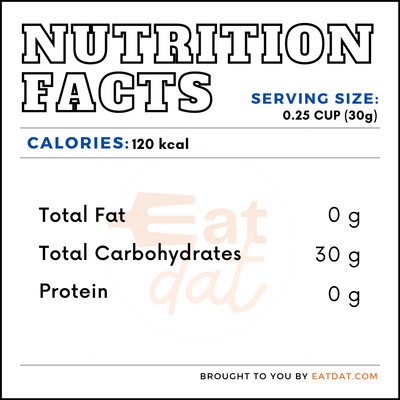
Icing Sugar
What is Icing Sugar?
Icing sugar is also known as powdered sugar or confectioners’ sugar. It is produced when granulated sugar is ground into a powdered state. This type of sugar can be produced on a large scale using milling machines. However, you can make yours at home by grinding granulated sugar in a blender or coffee grinder. A likely stressful choice is to crush it using a mortar and a pestle.
- Often, corn starch is usually added to icing sugar to prevent it from clumping.
- It is often added to cakes and other baked goods but does not add a significant health benefit to the body.
Origin
Over the centuries, people bought their sugar in different textures and refinement levels. Individuals could give details on how fine they want their sugar to be. From the 1600s to the 1800s, it was common to find sugar sold in the form of cones or loaves. Sellers would break them into tiny pieces using specialized tools. After this, sifting is performed to separate the larger particles from the fine sugar granules. Sugar grated from cones was the best form of icing sugar in those years. As technology and industrial processes began to improve at the end of the 18th century, this became more readily available. In the 19th century, powdered sugar became common among cooks. From then onwards, people have been using this for cake and other confectioners.
Nutrition
Icing sugar supplies predominantly energy needed for physical activities in terms of carbohydrates. Other than this, it does not add any other significant nutritional benefit to your body. From 0.25 cup (30g) of uncooked icing sugar, there are:

This will supply about 6% of your daily need if you are on a 2000-calorie diet. You will have the internal energy to perform physical activities for some minutes. However, it is recommended that you don’t take excessive icing sugar. Research has shown that too much sugar can contribute to weight gain, fat accumulation, diabetes and heart disease.
Icing sugar production
This powdered sugar can be produced on a large scale using an icing sugar grinding machine. These machines have integrated buffer containers to produce top-notch quality. The sugar is usually ground continuously under low temperatures to produce fine particles. The machine can be set to deliver the fineness that corresponds to the desire of customers. The fineness of the sugar granules is graduated in terms of X. The lower the number of X, the more coarse the sugar particles are. A little anti-caking agent like corn starch or tricalcium phosphate is then added to prevent clumping.
Application
- The steps to make icing sugar at home are easy and straightforward. All you need is sugar and a standard blender.
- Pour the granulated sugar into the grinder and start the machine.
- Be cautious not to add too little or too much sugar to the blender at once. Doing both could affect the texture of the end product. The amount of sugar depends on the nature of your blender.
- When the sugar is powdered, you can then remove it from the blender.
- Pour the sugar through a fine sieve to separate larger particles from the fine granules.
- After this, you can then regrind the larger particles and sift again. Keep doing this over and over until you achieve your desired result.
It is also worth knowing that the color of sugar you use also reflects in the final product, whether brown or white sugar. If you don’t have blender readily available, you would have to use a mortar and pestle to crush the sugar, although this will be stressful.
The best place to store this is in an airtight container. This will keep it away from moisture and insects like sugar ants. Don’t forget to stir the sugar with a little corn flour to prevent clumping.
Icing sugar recipes
This type of sugar is an integral component of many treats. Here are five tasty desserts:
- Chocolate Truffles
- White chocolate fudge
- Layered fruit Sandesh
- Eggless Chocolate Fudge cake
- Rum centered chocolates
FDA regulation
The Food and Drug Administration does not particularly mention any standard identification or regulation concerning icing sugar. However, they have rules pertaining to the consumption, nutritional value, and handling of added sugars. They also assign a standard identification of food additives.
References
“Nutritional value of icing sugar,” https://www.myfitnesspal.com/food/calories/icing-sugar-389238028
“FDA regulation concerning added sugars,” https://www.fda.gov/food/new-nutrition-facts-label/added-sugars-new-nutrition-facts-label
